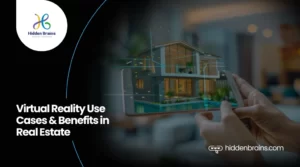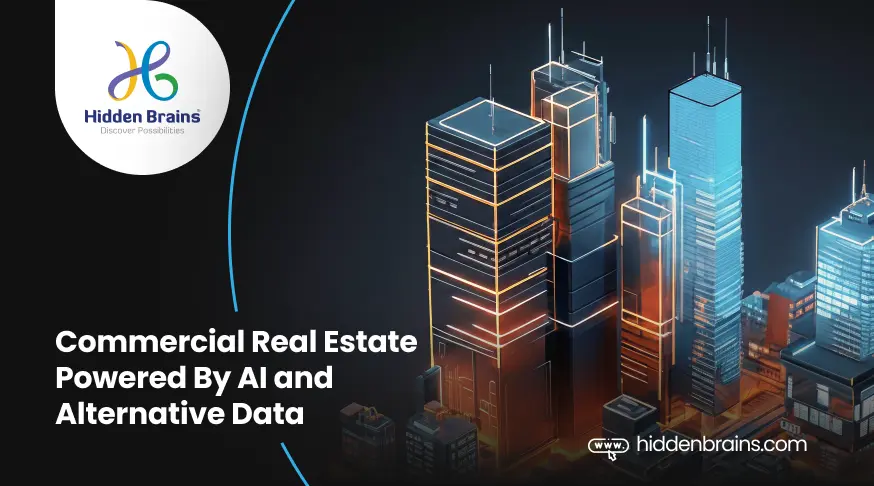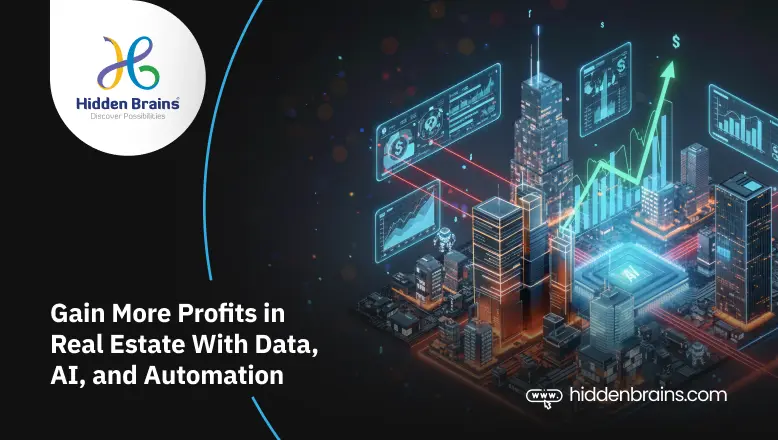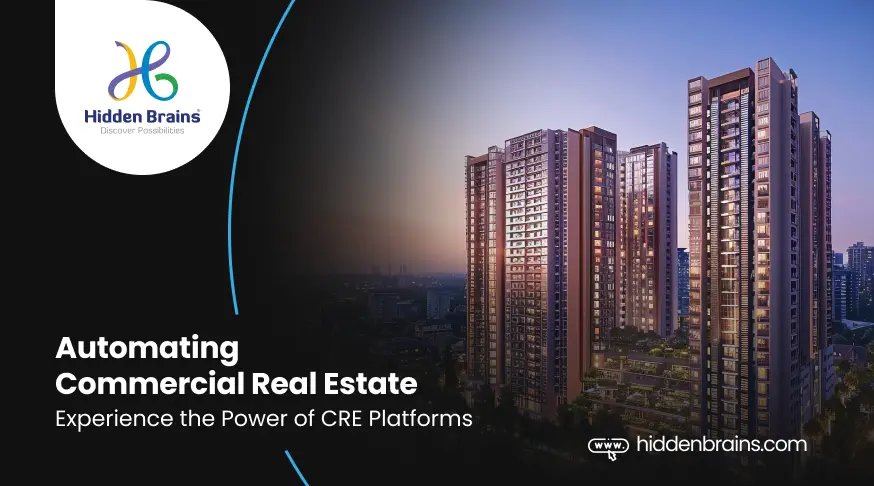Virtual Reality in real estate business is becoming a game-changer and enabling businesses to boost a 40% conversion rate. Wondering how VR technology is revolutionizing the real estate industry?
Well, using Virtual Reality in the Real Estate Industry is turning out as a new hue for beginners. As per records, the real estate market is aggressively growing worldwide and is expected to make a staggering value of $637.80 trillion by 2024. Moreover, it is projected that the market will grow at a CAGR of 3.41% by 2028 and will make $729.40 trillion in revenue.
This is where virtual reality is facilitating the process and allowing you to become part of this profitable market.
The integration of Virtual Reality in real estate app development solutions has streamlined the property showcasing process and simplified the entire experience. All they need is to put on a VR headset to virtually explore the property.
Using the VR headsets, the buyers can indulge themselves in virtual property tours, exploring interiors and exteriors from any corner of the world.
With this emerging technology, the home-buying journey has become more convincing and accessible. In addition, it has also paved the way for closing deals seamlessly, all while redefining the traditional boundaries of property exploration.
All thanks to the benefits of Virtual Reality in real estate that enables end-customers to see what exactly they dream and all through with immersive experiences.
Looking to integrate virtual commerce capabilities into your real estate app? Hidden Brains offers you industry Best Real Estate Software Solutions with future ready functionalities.
Let’s watch the quick video to know about “Virtual Reality In Real Estate”
Virtual Reality In Real Estate
Virtual reality is boldly paving its way in the real estate industry but how it is benefiting the industry? Let’s get into the details …
Virtual Reality In Real Estate Industry: Market Overview, Use Cases and Benefits
Undoubtedly, virtual reality is gaining hype and reshaping the real estate industry. It is fastly transitioning from mobile app prototypes to immersive experiences through VR headsets. As demand for more satisfying and realistic property displays grows, so does the adoption of VR devices, meeting the evolving needs of prospective buyers.
“According to the market survey reports, Virtual Reality can save up to 60% of agents’ time when it comes to the initial property viewing process and eliminate the hassle of viewing a property in the real estate landscape.”
This emerging technology is not just a trend but an all-new business opportunity in real estate. Unlike traditional methodologies, VR enhances transparency in the property buying process, marking a steep shift in the industry. The implementation of virtual reality streamlines and accelerates the entire process for both realtors and clients, making it robust and time-efficient.
In today’s real estate landscape, agencies leverage VR technology to showcase a diverse range of properties, from multi-story flats to million-dollar bungalows, lands, and houses. This transformative tool is not just altering the way properties are viewed but revolutionizing the entire real estate transaction experience.

Ready to transform your real estate business?
Virtual Reality in Real Estate: Understanding The Market Overview
Virtual reality, a rapidly advancing technology, has significantly impacted industries, including real estate. Before hiring a mobile app developer, let’s explore the market overview.
- Commercial properties using VR experiences are revolutionizing the real estate market and can increase 49% brand engagement. Virtual Reality in real estate acts like a magnetic pull and attracts potential customers successfully.
- 90% of agents found that virtual staging is more impactful as it allows buyers to take a property tour in their comfort without having to step out through a door.
- 26% of agents and brokers are expected to spend money on VR technology shortly.
- 77% of clients prefer taking a virtual tour of the property before they schedule a physical tour. It means buyers found this technology helpful in providing real ideas about the property.

These figures are really impressive which takes you straight to the thought of how can you use virtual reality in real estate to make your visitors turn into investors.
What Are The Practical Use Cases of Virtual Reality in Real Estate Solutions?
Even today also, for many people Virtual Reality is just limited to video games and entertainment. However, in reality, the technology has a huge potential and revolutionize the Real Estate industry. By hiring any top mobile app development company you can customize the solution, but how can you use virtual reality in Real Estate solutions?
Here we have selected the most common uses of Virtual Reality in Real Estate:
1. Virtual Property Staging
The conversion rate of any business is majorly dependent upon the fact of how impactfully staging or displaying your products. And it’s no wonder that virtual reality in real estate marketing is used to promote properties in good light.
Let’s say you are touring a property with a few old torn furniture or having a tour with rightly fitted furniture pieces- which property will appeal to you more?
“A whopping 86% of prospective buyers express that visualizing a property becomes significantly more accessible when it’s staged. In parallel, 77% of buyer’s agents affirm that a well-staged home markedly facilitates prospective buyers in envisioning themselves within the living space.”
The one that is well decorated with the right yet modern furniture. And this is what Virtual reality in the real estate business does.
VR helps businesses in staging properties that are under construction. This is one of the major constraints of marketers to impress buyers to make bookings for incomplete properties.
Virtual Reality allows real estate agents and interior designers to work together and show an enhanced version of the property which is called staging. And once the staging is done, the property-selling procedure becomes far easier.
Here’s how VR helps in Staging:
- VR allows you to create stunning 3D property tours.
- Give a 360-degree view of the property.
- Offer guided tours with proper furniture fixers.
With so many options on hand, real estate agents can market the properties more confidently and conveniently.
Are you looking for the top software development company to customize real estate solutions with VR capabilities? Let Hidden Brains be your trusted tech partner!
2. Virtual Property Tours
Whether buying a property for personal or commercial use, requires time and patience. It becomes even more challenging when the buyers and the property are at a huge distance. This is where using Virtual Reality in real estate solutions can help you get an edge.
“A staggering 87% more individuals engage with property listings that feature a virtual tour compared to those without 360-degree virtual tours.”
There are two reasons for integrating Virtual Reality In Real Estate business solutions:
- This technology empowers potential buyers to remotely explore homes and spaces with unprecedented realism. By donning VR headsets, individuals can navigate through a property, gaining a genuine sense of its layout, design, and distinctive features—all achieved without the necessity for in-person visits.
- Secondly, this innovation saves time and also enhances the decision-making process by providing an authentic virtual walkthrough of the property.
3. Architectural Visualization
Is your property under construction or not yet ready to display the architecture of the property? Well, marketing a property that isn’t yet constructed is always a challenging task for agents.
That’s where people look for 3D models that show the all-new version of the property and neighborhood so that potential buyers can imagine the property’s architecture.
But what if they ask for interiors?
To showcase the property interior, real estate agents build fully decorated apartments that give an idea about how your property will look after construction.
Don’t you think that these are all old-school practices and require huge investments?
Of course yes!
This is where virtual reality can be used for showcasing architectural designs and plans. It allows developers, architects, and clients to virtually walk through buildings and visualize spaces before they are constructed. This aids in design decisions preventing misunderstandings and offers a clear idea about what’s being offered.

Deliver immersive Three-Dimensional Experience.
4. Virtual Assistance To Tenants
Isn’t it annoying to explain every single or small thing to tenants? Real estate agents and landlords need to communicate a lot and sometimes this seems to be frustrating.
And this can be one of the problems for the businesses dedicated to property rentals.
This is where it makes sense to hire an app developer to customize real estate solutions with VR capabilities to simplify the communication between landlords and tenants.
Tenants can just put on the headset and experience the 3D virtual tour to understand how the utilities will work and avoid unnecessary contact difficulties with landlords.
5. V-Commerce In Real Estate Solutions
We have talked about property staging, architecture visualization, and more with lots of furniture fixer suggestions. But what if property buyers can get a direct option of buying that specific product that they see from the same app?
Let’s say a homebuyer sees a 3D real estate model but wants their home to have the same interior. They probably go to an online store and look out for similar or close to its resemblance products.
That’s where offering the option to click on the button to directly add that product to the cart can help you make more money. This will enhance the engagement rate as well.
So now you know the best practical uses of virtual reality in real estate, but what are the best benefits of launching a VR-based real estate app?
Benefits of Using Virtual Reality in Real Estate
Virtual Reality is recently growing in popularity and opening up many opportunities to real estate businesses. From swift property listings to comparing prices and negotiating the deal, using VR in real estate has made the workflow robust. Are you convinced enough and ready to hire a mobile app developer to customize your real estate app, then let’s take a quick look at its benefits.
So what are the best benefits of using virtual reality in real estate industry solutions?
Immersive Property Tours: Experience virtual walkthroughs with VR-based real estate applications that provide a realistic feel of a property and limit your physical visits to the property.
Time-Efficient Decision-Making: As buyers will have an experience of touring the enhanced property versions, therefore it accelerates the property-buying process with streamlined virtual tours.
Global Property Marketing: Reach a broader audience by showcasing properties globally through immersive and accessible virtual experiences.
Enhanced Visualization for Buyers: Buyers can visualize spaces with realistic detail, aiding in better decision-making and understanding property layouts.
Cost-Effective Virtual Staging: Cut costs with virtual staging, digitally furnishing spaces to showcase a property’s potential without physical staging expenses.
Remote Property Viewing: This allows remote property viewing, enabling prospective buyers to explore homes from anywhere with internet access.
Architectural Design Preview: Preview architectural designs in VR, helping developers, architects, and clients make informed decisions about projects.
Increased Buyer Engagement: Capture buyer interest with engaging virtual experiences, keeping them more actively involved in the property exploration process.
Reduced Need for Physical Travel: Minimize travel requirements for property viewings, saving both buyers and sellers time and resources.
Global Collaboration for Developers: Facilitate global collaboration on real estate projects by allowing stakeholders to virtually interact with architectural plans.
Visualizing Off-Plan Properties: Provide an immersive preview of off-plan properties, allowing buyers to visualize the final product before completion.
Transparent Property Transactions: Boost transparency by offering buyers a comprehensive view of properties, reducing uncertainties in the buying process.
Interactive Property Showcases: Create interactive showcases, enabling users to engage with virtual elements within a property space.
Digital Guidance for Tenants: Facilitate efficient communication with tenants by providing virtual instructions, covering property guidelines and community updates.
Knowing these benefits will give you an idea about how using Virtual Reality in Real Estate is transforming business success and impacting your ROI.
If you’re also interested in revolutionizing your real estate business then you can read below how to leverage this opportunity to start getting the funding of millions of dollars!
What Features To Include in VR-Based Real Estate Solution?
There are several property listing sites available in the market that allow buyers and sellers to get connected on the common platform from anywhere in the world. But Virtual Reality has taken this concept to another level by offering brilliant facilities like virtual tours, architectural visualization, virtual staging and presentation, and more.
If you are also interested in taking your real estate business to new heights, then you are advised to consider integrating these modern features into your virtual reality- based real estate app.

Aren’t these features already sound so interesting?
Imagine how showcasing your property with such an immersive experience will greatly boost your business sales and increase the conversion rate. But the central question is what are the basic steps of creating a VR-based real estate app?
Let’s get into it!
How To Create a Virtual Reality-Based Real Estate Application?
Developing a real-estate app with VR capabilities also follows the same process as other apps. but all you need is to pay a little more attention to the VR-based functionalities when developing a real estate app.
Let’s get into the step by step guide to create a real estate app with VR functionalities…
Step 1: Define Objectives and Features
- Clarify Purpose: Understand the purpose of your VR real estate app before making a huge investment. Whether it’s offering immersive virtual property tours, interactive floor plans, or advanced architectural visualization. Having a clear goal in mind will enable you to follow the right development process.
- List Features: Identify and compile a list of features essential for your VR real estate app. Prioritize features and functionalities by keeping in mind your budget limits and the requirements of buyers. Also, make sure that the features will be compatible with a range of VR devices for maximum accessibility.
Step 2: Select a Development Platform
Select a VR framework compatible with diverse devices. Opt for cross-platform development to maximize reach, ensuring your app caters to a broad audience seamlessly.
Step 3: Design User Interface and Experience
- VR-Friendly UI/UX: Craft an intuitive and user-friendly interface specifically tailored for VR environments. Prioritize elements that enhance ease of navigation within the virtual space while minimizing factors that could induce motion sickness.
- Interactive Elements: Incorporate interactive elements strategically. You can consider including features like clickable hotspots, tooltips, and interactive floor plans and more to overall uplift the virtual tour experience.
Step 4: Integrate VR Technologies
- 3D Modeling and Rendering: Craft realistic property environments using advanced 3D modeling techniques, ensuring an immersive experience with high-quality rendering for visual captivation.
- Spatial Audio: Elevate immersion with spatial audio, providing users with realistic sound cues tied to their location for an authentic virtual atmosphere.
- User Interaction: Enhance engagement by enabling users to interact with elements, from opening doors to adjusting lighting, and enriching virtual property tours.
Step 5: Testing and Launch
- Thorough Testing: Conduct rigorous testing to ensure the smooth functioning of the VR application. Verify VR compatibility, assess performance under different scenarios, and thoroughly evaluate the overall user experience.
- Launch and Marketing: Once satisfied with testing and user feedback, launch your VR-based real estate app. Develop a robust marketing strategy that emphasizes the unique VR features of your app, targeting potential users within the real estate market and beyond.

Hidden Brains Can be the trusted platform!
What Type of Tech-Team is Required To Build a VR-Based Real Estate App?
Building a property-selling app with VR requires a full-stack team, encompassing a project manager, backend and frontend developers, UI/UX designer, and app tester for comprehensive development and testing.
Though there is a possibility to hire freelance developers as well hiring all these experts from different locations with different coding experiences and cultures can ultimately affect the quality of work. Instead of focusing on product development, your focus should be on aligning the team on one platform and coordinating between teams.
That’s where Hidden Brains – a top mobile app development company enables you to hire a team of high-end developers with experience in VR technology and real estate app development. They can better understand your requirements and help you transform the idea into reality without any lack.
Summary: How Can Hidden Brains Help You Integrate Virtual Reality in Real State Solutions?
The real estate market is booming to the point where real estate agents can make millions of turnover, but by using VR capabilities making money in the real estate business becomes far easier. Using Virtual reality in real estate will be beneficial for both agents and buyers. It not only allows buyers to virtually tour real estate options but also allows agents to market the under construction properties.
All you to understand your business requirements and buyers’ preferences to customize your solution. If you are not getting any clue where you should start and with what approach, then hire a mobile app developer with Hidden Brains to simplify your software development journey.
The experts will guide you through conceptualization to the final deployment of your application. You can contact us for more details and queries.
FAQs
If you have any questions about how virtual reality in real estate is working and accurate for buyers, then consider our FAQs section for more details.
Is VR technology expensive for real estate professionals to implement?
The cost of implementing Virtual reality in real estate is not that expensive. As VR technology has become a little more popular, therefore, you can find the availability of tech experts and affordable VR devices that help you get started at even lower cost.
How accurate are virtual property tours in representing the actual space?
Virtual property tours are designed in a way to offer a highly accurate picture of the property layout, and its features. However, the level of accuracy can vary based on the quality of the VR application and the content you upload to the app.
How can real estate agents leverage VR for property presentations?
Real estate agents can use VR for virtual property tours, showcasing homes, commercial spaces, or development projects. This allows clients to experience properties remotely and make more informed decisions.
How much does it cost to create a real estate app with VR capabilities?
The average cost to integrate VR capabilities into the real estate app will range anywhere from $30,000*+ and can go beyond $50,000*+ depending upon the complexity of the app.






























































































![Sales & Distribution [Oil & Gas] Sales & Distribution [Oil & Gas]](https://www.hiddenbrains.com/blog/wp-content/themes/blankslate/assets/images/sales_and_distribution-icon.74d08193.svg)

![Fluid Terminal Management [Oil & Gas] Fluid Terminal Management [Oil & Gas]](https://www.hiddenbrains.com/blog/wp-content/themes/blankslate/assets/images/fluid_terminal_management-icon.4b3a27a4.svg)































![Sales & Distribution [Oil & Gas] Sales & Distribution [Oil & Gas]](https://www.hiddenbrains.com/blog/wp-content/themes/blankslate/assets/images/sales_and_distribution-icon.74d08193.svg?1.0.0)
![Fluid Terminal Management [Oil & Gas] Fluid Terminal Management [Oil & Gas]](https://www.hiddenbrains.com/blog/wp-content/themes/blankslate/assets/images/fluid_terminal_management-icon.4b3a27a4.svg?1.0.0)
























































































































































































